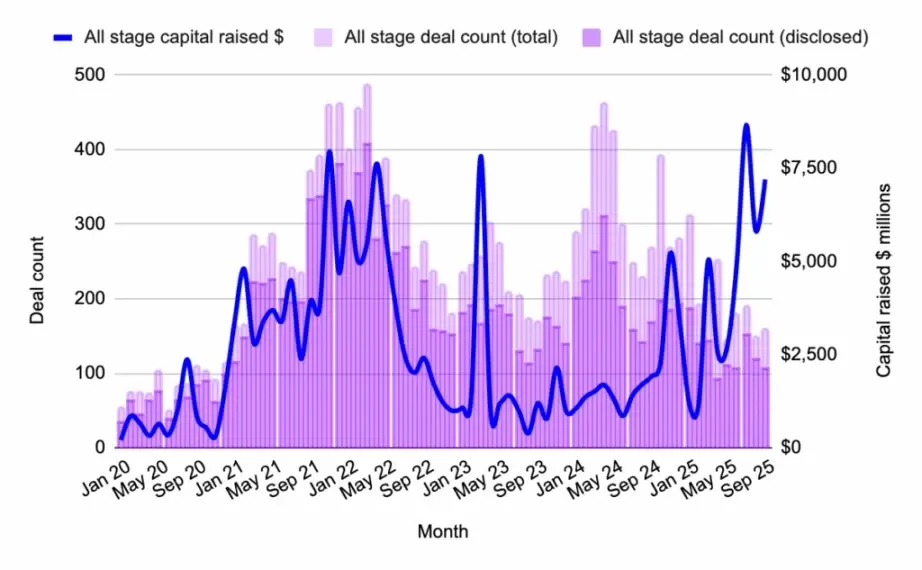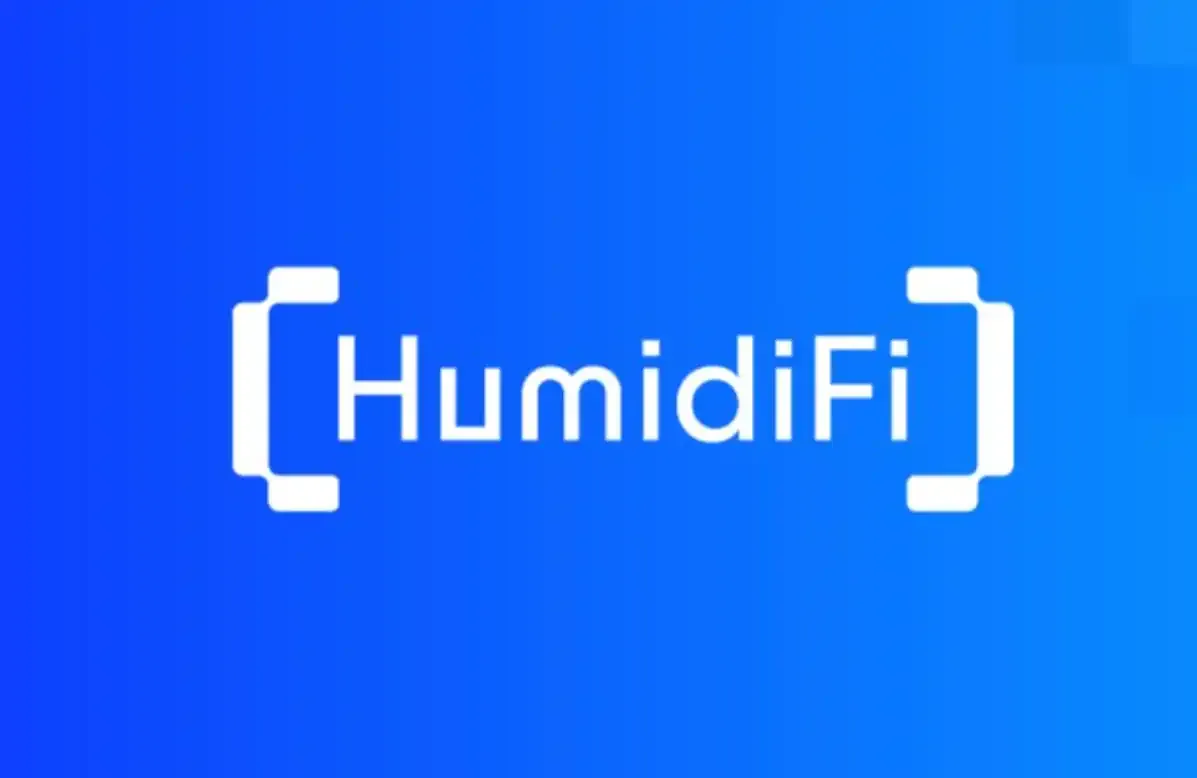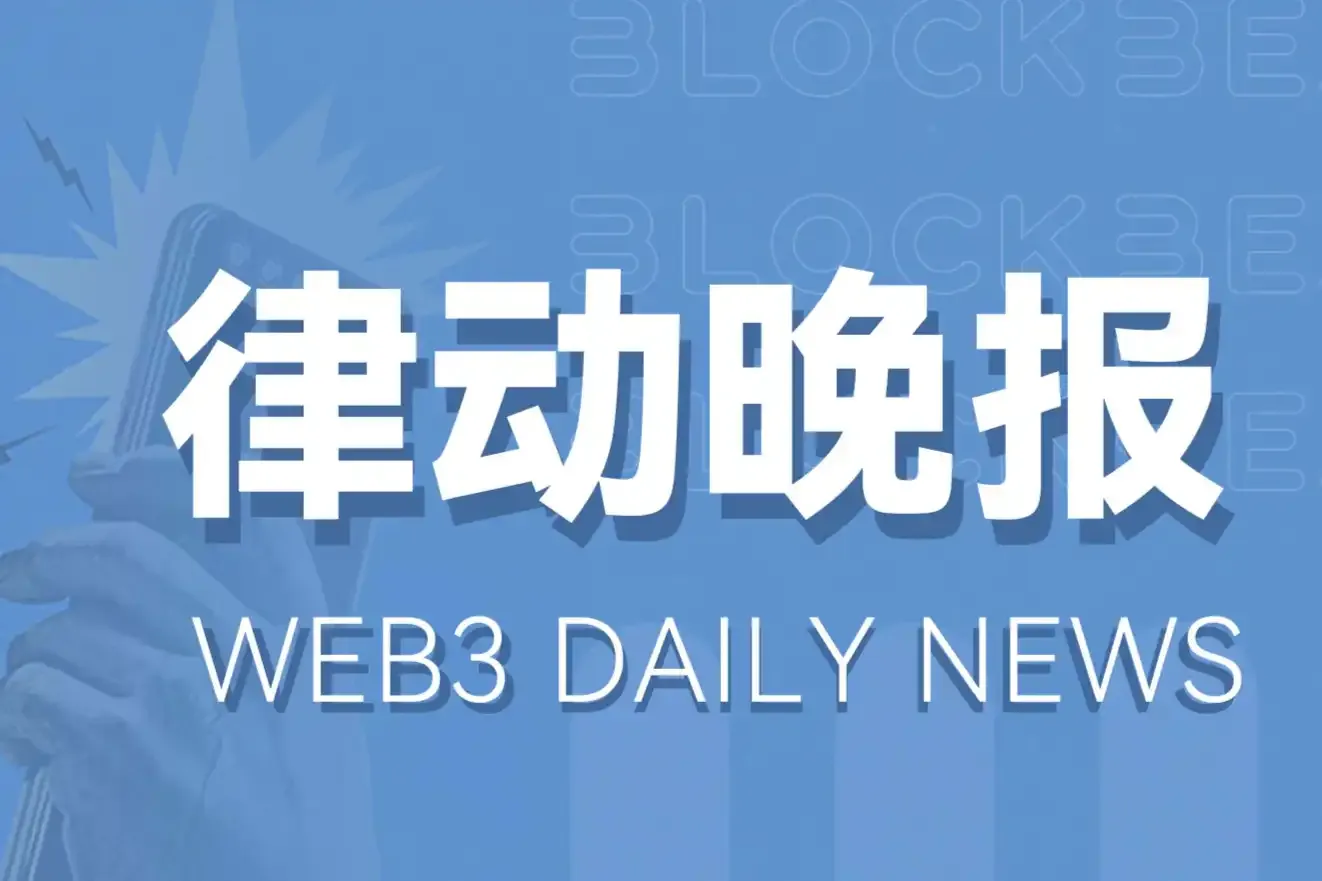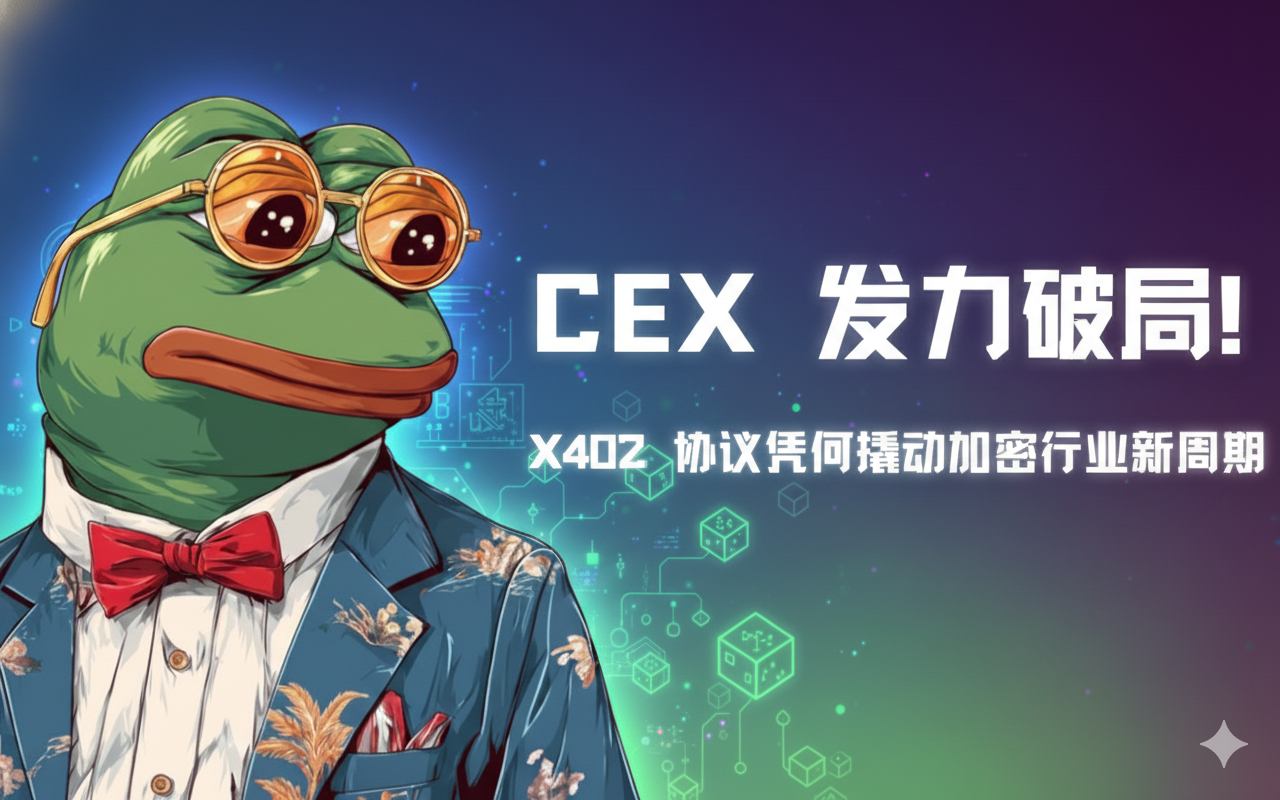
X402: From Sleeping Symbol to $30 Trillion Core
In the history of internet development, the HTTP 402 "Payment Required" status code has remained dormant for 30 years due to a lack of suitable technical environment and commercial scenarios, unable to break through the conceptual level. Until May 6, 2025, Coinbase activated this standard and launched the X402 protocol, allowing AI to achieve autonomous on-chain payments. Within just a few months, it transitioned from a technical community experiment to the core engine of the crypto capital market, marking the internet's return from a traffic economy to a value internet. In the context of AI agents, stablecoins, and on-chain settlements, a new economic layer centered around payments is forming. The a16z 2025 crypto report predicts that by 2030, the value of agent payment transactions will reach $30 trillion, with the open standard X402 at the heart of this wave.
The rise of X402 is not coincidental; it is primarily due to the maturity of the technological ecosystem providing fertile ground for its implementation. Breakthroughs in AI agent technology have enabled machines to autonomously identify needs and assess value, transforming them from passive tools executing commands; on-chain settlement technology has achieved trustworthy transactions without intermediaries, solving the trust issues of value transfer; stablecoins like USDC provide a value carrier for cross-scenario circulation, effectively avoiding the price volatility risks of cryptocurrencies.
On this foundation, the technical design of X402 also addresses industry pain points. As an open standard, it has achieved multi-chain integration with Base, Polygon, Solana, etc., to solve cross-chain payment compatibility issues. The low barrier feature of "one line of code to enable USDC instant settlement" significantly reduces the cost of developer integration, while the "transaction as identity verification" mechanism eliminates reliance on traditional account systems, perfectly adapting to the anonymity and efficiency needs of machine interactions, allowing it to stand out rapidly among similar solutions.
Capital Resonance: From Meme Preheating to Ecological Pricing
The explosion of X402 is not a linear growth driven by technology, but rather a resonance effect between capital and ecology, completing a rapid leap from "concept validation" to "value consensus."
The first explosion came from the meme asset PING, which attracted hundreds of thousands of addresses with the mechanism of "1 USDC minting 5000 tokens." In the midst of speculative sentiment, it unexpectedly conducted performance stress testing of the protocol, publicly validating the high concurrency and low cost of the X402 protocol. After the sentiment was warmed up, funds quickly rotated to functional assets with infrastructure value, such as PayAI, which plays the role of a multi-chain facilitator, once accounting for over 14% of the trading volume in the X402 ecosystem. The logic of capital is completing a transition from "trying out" to "pricing," pushing exchanges to the forefront of narrative resource competition.
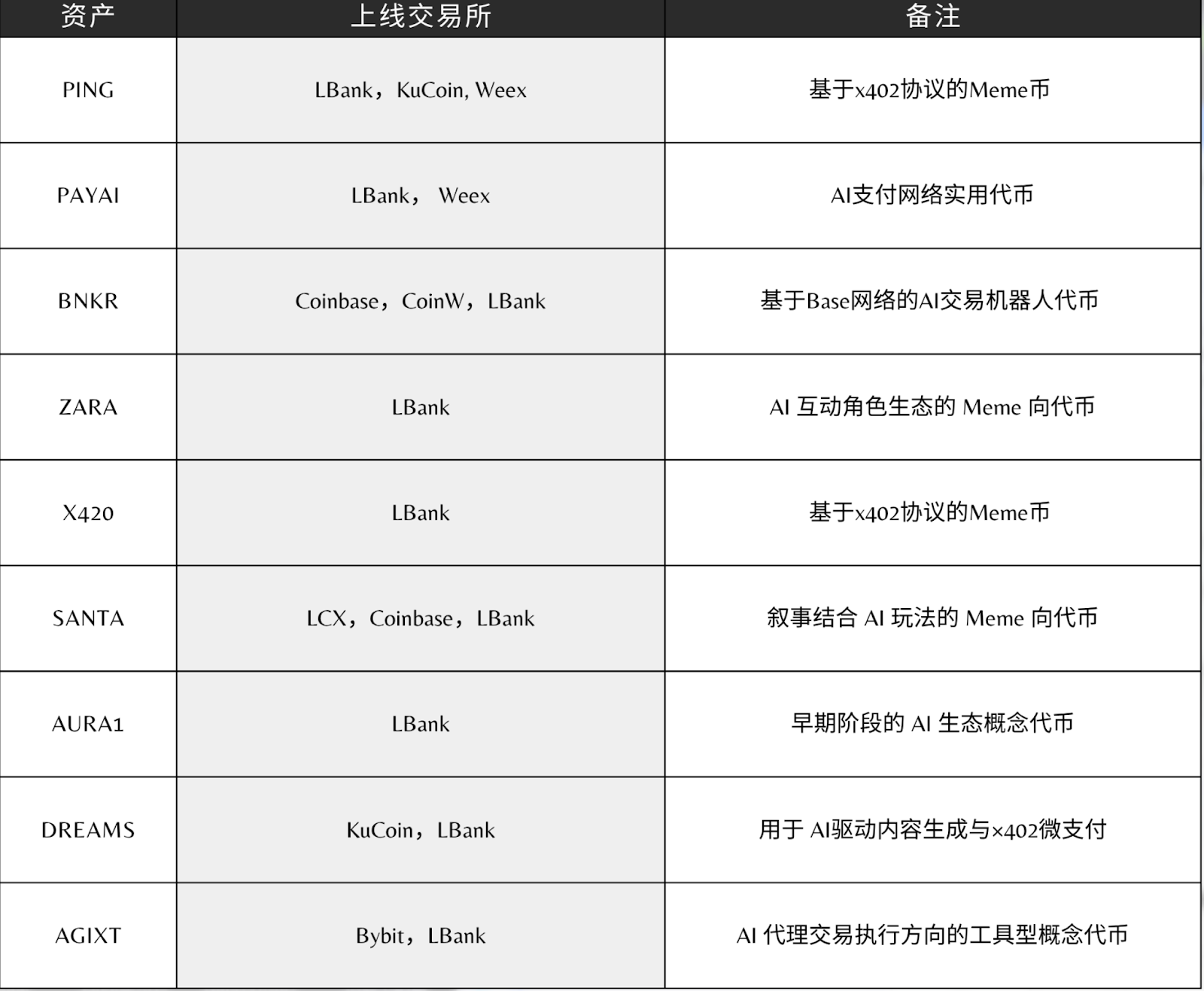
At this stage, the position of trading platforms directly determines the route of capital entry. For investors, a platform that can comprehensively and early accommodate ecological assets means faster price discovery, lower entry and exit costs, and stronger wealth effects.
Data shows that in mid-October, when sentiment in the X402 sector was at its peak, LBank accounted for over 27% of the daily trading volume in the X402 ecosystem, becoming one of the most concentrated entry points for capital flow in this narrative. The overall performance of the related assets launched on the platform was impressive, including PING (highest increase of 989%), PAYAI (875%), BNKR (654%), ZARA (347%), X420 (291%), SANTA (250%), AURA1 (240%), AGIXT (213%), DREAMS (198%), and DIRA (155%). The average highest increase of the ten core projects was about 421%, significantly outperforming the overall market, making LBank the preferred channel for investors in the early narrative layout.
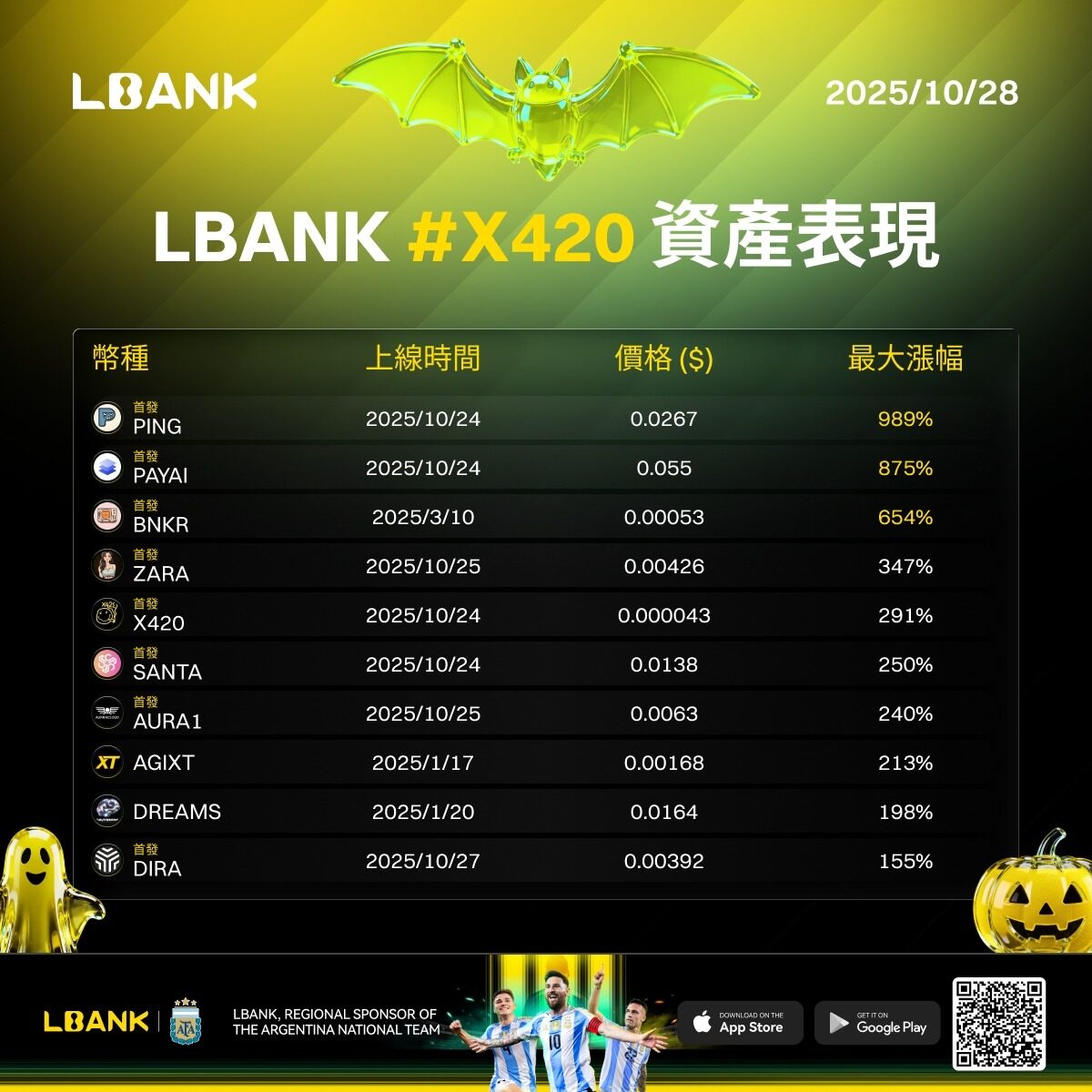
For project parties, whether they can quickly establish trading depth and community attention in the early stages of their lifecycle will determine the speed of their network effect expansion. Listing on LBank not only means global liquidity coverage but also represents a path to gaining stronger pricing power during the sentiment window.
From an industry competition perspective, speed is reshaping rankings and weights. The ability to keenly identify narrative inflection points, rapidly launch new products to complete ecological coverage, and maintain long-term deep support is becoming a new differentiating factor among platforms. From the timeline and asset performance, LBank is at the forefront of capturing the speed dividend in this trend, and its capacity to accommodate has become an important indicator of the acceleration of the X402 ecosystem.
Risks, Regulation, and Unknown Boundaries
The rapid rise of X402 is also accompanied by risks and controversies, but it is precisely these "undefined areas" that constitute the innovative space and speculative frontier of the new cycle.
Challenges on the security front have already emerged: In October, the third-party application x402bridge suffered a private key leak, resulting in the theft of $17,000 USDC, exposing the shortcomings of developers' security awareness in the early stages of the ecosystem. Additionally, the risks associated with AI autonomous payments are even more concerning; malicious prompt injections could potentially induce AI to initiate unauthorized payments, and vulnerabilities such as infinite spending loops have not yet been fully resolved. In response, Coinbase has improved its protective system by publishing core security standards, promoting a "minimal trust model," and self-custody deployment, but comprehensive adaptation of security capabilities will still take time.
The gray areas of regulation bring greater uncertainty. Does an AI agent have legal subject status? Do automated on-chain transactions require financial licenses? How do small, high-frequency payments meet anti-money laundering and KYC requirements? These questions currently lack clear answers. However, as industry analysts have stated, "Every regulatory area that has yet to be defined is a speculative frontier of the new cycle." This uncertainty, in turn, provides the market with imaginative space and forces the industry to explore compliance paths.
From HTTP to X402, the Starting Point of New Wealth Narratives
From HTTP to X402, it is essentially the evolution of the internet from the "information transmission layer" to the "value settlement layer." Thirty years ago, HTTP defined the rules of information flow, giving rise to the golden age of the traffic economy; today, X402 is defining the logic of value flow, promoting AI agents to become new economic entities.
The alliance between Coinbase and Cloudflare is just the beginning, as exchanges, stablecoin issuers, and AI companies are all seeking their positions on this track.
X402 is a technological revolution, but it is also the engine of financial narratives. It transforms on-chain traffic into cash flow and turns AI applications into assets. At the edge of the new cycle, LBank's early layout and high liquidity make it the platform that first captures the "wealth effect" in this narrative.
This new cycle led by X402 is not only a narrative innovation in the crypto industry but also an inevitable shift in the digital economy from "traffic is king" to "value is fundamental." Just as the summer of DeFi in 2020 redefined financial services, this time, the combination of AI and payments is opening up a broader era of autonomous economy.
免责声明:本文章仅代表作者个人观点,不代表本平台的立场和观点。本文章仅供信息分享,不构成对任何人的任何投资建议。用户与作者之间的任何争议,与本平台无关。如网页中刊载的文章或图片涉及侵权,请提供相关的权利证明和身份证明发送邮件到support@aicoin.com,本平台相关工作人员将会进行核查。
